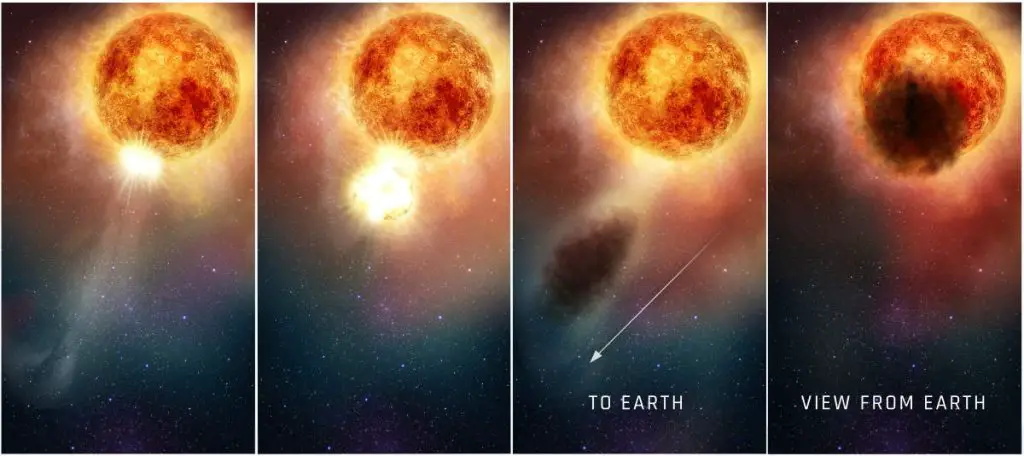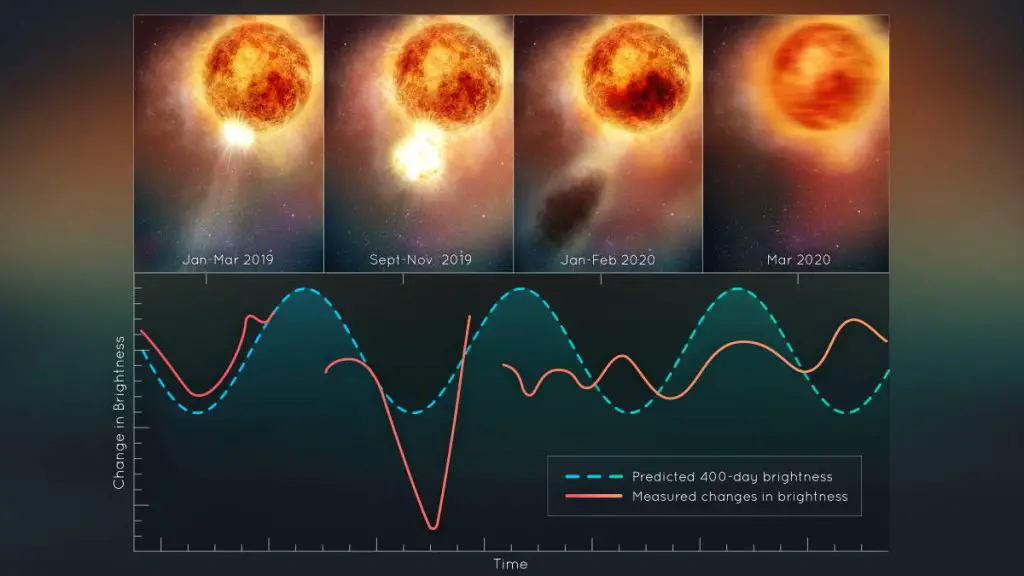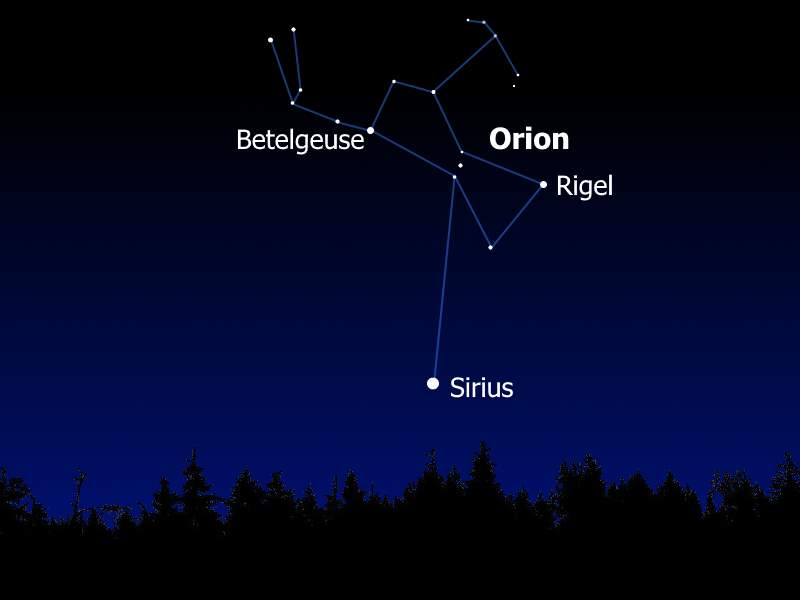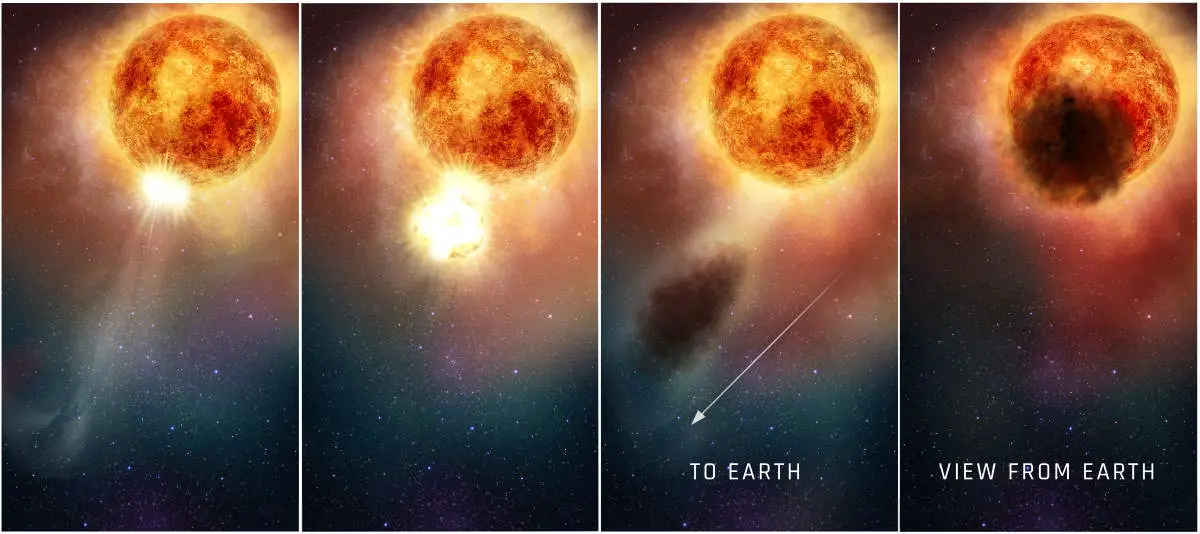In 2019, red supergiant star Betelgeuse suddenly dimmed. In fact, the star has a 5.9-year light-cycle minimum period. But, this time, it dramatically to an all-time low.
Betelgeuse is one of the brightest stars in the Earth’s sky and easily can be found on the right shoulder of the constellation Orion. So the dimming, which began in late 2019 and lasted for a few months, was easily noticeable even by backyard observers watching the star change brightness.
This weird, unexpected dimming weird sparked rumors that its death is imminent and it was going to be a supernova.
In fact, Betelguese is really nearing the end of its life. Because of its enormous size, it burns its fuel very rapidly. Red supergiant stars don’t last long, typically only a few hundred thousand years, maybe up to a million. This is actually very short for astronomical timescales. But very long for the human lifespan.
The reason why Betelgeuse dimmed in 2019 is a gigantic mass ejection
But, it seems the red supergiant isn’t dying, yet. Using data from Hubble Space Telescope‘s and several other observatories’ observations, astronomers have concluded that the 2019 dimming was caused by a gigantic Surface Mass Ejection (SME). The ejected material blocked our view and as a result, the supergiant looked dimmed from Earth.
Our Sun also routinely blows off parts of its tenuous outer atmosphere, the corona, in an event known as a Coronal Mass Ejection (CME). But the Betelgeuse Surface Mass Ejection blasted off 400 billion times as much mass as a typical Coronal Mass Ejection!

According to scientists, the huge star is still recovering from that gigantic explosion.
Andrea Dupree of the Center for Astrophysics | Harvard & Smithsonian in Cambridge, Massachusetts says:
“Betelgeuse continues doing some very unusual things right now; the interior is sort of bouncing.”
“We’ve never before seen a huge mass ejection of the surface of a star”, adds Dupree. “We are left with something going on that we don’t completely understand. It’s a totally new phenomenon that we can observe directly and resolve surface details with Hubble. We’re watching stellar evolution in real-time.”
Even more fantastic, the supergiant’s 400-day pulsation rate is now gone, perhaps at least temporarily. For almost 200 years astronomers have measured this rhythm as evident in changes in Betelgeuse’s brightness variations and surface motions. Its disruption attests to the ferocity of the blowout.
Betelgeuse is so huge that if it replaced the Sun at the center of our solar system, its outer surface would extend past the orbit of Jupiter (see: What other stars would look like in the place of the Sun?).



So, when will Betelgeuse go supernova?
The red supergiant’s days are numbered for sure, but remember, astronomical timescales are huge. So Betelgeuse won’t go supernova in our lifetimes, most probably. But, in fact, no one really knows. It could be tomorrow or a few hundred thousand years in the future.
If Betelgeuse goes supernova, will it destroy Earth?
No. It is too far away: current best estimates are on the order of 500-600 light-years from the Sun. Astronomers say we’d have to be within 50 light-years for it to harm us if Betelgeuse goes supernova.
It should be a spectacular view of the Earth’s sky, though. At its peak, it could shine roughly as bright as the Full Moon, maybe even more. Then it should start to fade and become a nebula.
Looking at it, with or without a telescope, would not harm an observer’s eyes.
Video: What will it look like when Betelgeuse goes supernova?
Sources
- “Hubble Sees Red Supergiant Star Betelgeuse Slowly Recovering After Blowing Its Top” on the NASA website
- “Why Betelgeuse Dimmed” on the Universe Today website
- “Hubble Finds That Betelgeuse’s Mysterious Dimming Is Due to a Traumatic Outburst” on the NASA website
- Betelgeuse on Wikipedia
- “Betelgeuse will explode someday” on the Earth Sky website
- Moon Landings: All-Time List [1966-2025] - February 2, 2025
- What Is Max-Q and Why Is It Important During Rocket Launches? - January 16, 2025
- Top 10 Tallest Rockets Ever Launched [2025 Update] - January 16, 2025

